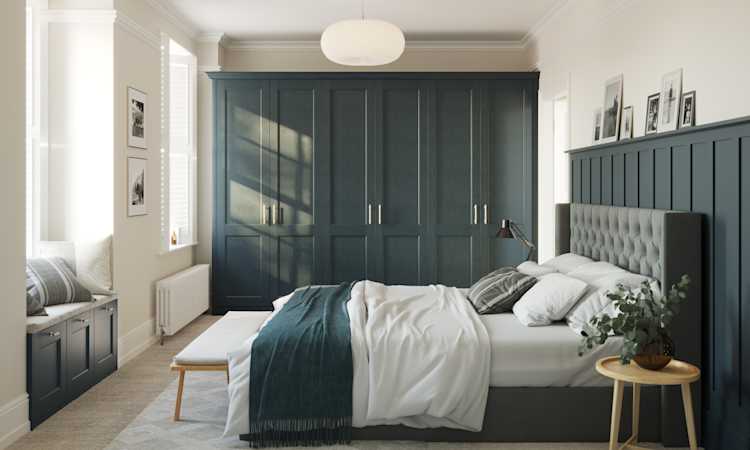

The Psychology of Bedroom Design: Creating a Relaxing Space
The Psychology of Bedroom Design: Creating a Relaxing Space
In today's fast-paced world, the bedroom serves as a personal sanctuary—a place to unwind, recharge, and find solace from the stresses of daily life. Understanding the psychology behind bedroom design can significantly enhance the relaxing ambiance of this vital space. This post delves into the key elements of bedroom design that promote relaxation and tranquility, helping you create a serene retreat within your home.
1. Colour Palette: The Foundation of Calm
The colours you choose for your bedroom walls, furniture, and decor have a profound impact on your mood and overall sense of well-being. Soft, muted tones such as blues, greens, and neutrals are known to have a calming effect. These colours can lower blood pressure, reduce anxiety, and promote restful sleep. Avoiding bright, bold colours in favour of soothing hues helps create a peaceful environment conducive to relaxation.

2. Lighting: Setting the Mood
Lighting plays a crucial role in creating a relaxing bedroom atmosphere. Natural light is ideal, as it boosts mood and supports a healthy circadian rhythm. Consider sheer curtains that allow daylight to filter in softly. For artificial lighting, opt for warm, soft lights instead of harsh, bright ones. Adjustable lighting, such as dimmer switches or layered lighting with bedside lamps, can help create a cozy and tranquil ambiance.
3. Furniture Placement: Creating Flow and Harmony
The arrangement of furniture in your bedroom can influence how spacious and serene the room feels. Cluttered spaces can lead to feelings of stress and anxiety. Ensure that your bedroom furniture is arranged in a way that promotes easy movement and avoids clutter. A fitted wardrobe can be an excellent solution for maximising storage without taking up excess space, helping to keep the room tidy and organised.
4. Textures and Materials: Comfort and Coziness
Incorporating a variety of textures can enhance the sensory experience of your bedroom. Soft, plush materials for bedding, cushions, and rugs create a sense of comfort and warmth. Natural materials like wood and cotton add a touch of tranquility and connection to nature, further enhancing the relaxing atmosphere. Consider a wooden bed frame, a cozy woollen throw, or a soft cotton duvet to elevate the room's comfort level.

5. Personal Touches: Creating a Personal Sanctuary
Personal touches make a bedroom feel uniquely yours, contributing to a sense of safety and comfort. Family photos, cherished mementos, and favorite artwork can infuse the space with positive emotions and personal meaning. However, it's important to strike a balance and avoid overloading the room with too many items, which can create a cluttered and chaotic feel.
6. Aromatherapy: Engaging the Senses
Scent is a powerful tool in creating a relaxing bedroom environment. Aromatherapy can significantly impact mood and relaxation levels. Scents like lavender, chamomile, and sandalwood are known for their calming properties. Using essential oil diffusers, scented candles, or linen sprays can help infuse your bedroom with soothing fragrances that promote relaxation and restful sleep.
7. Sound: Quiet and Peaceful
Minimising noise is essential for creating a tranquil bedroom. Consider soundproofing measures such as heavy curtains or rugs that can help dampen external sounds. White noise machines or gentle background music can also mask disruptive noises, creating a more peaceful environment conducive to relaxation and sleep.
8. Plants: Bringing Nature Indoors
Introducing plants into your bedroom can improve air quality and enhance the overall sense of calm. Plants like aloe vera, lavender, and snake plants are not only easy to maintain but also have properties that promote better sleep. The presence of greenery can create a soothing and refreshing ambiance, connecting you with nature and promoting a sense of well-being.
Conclusion
Creating a relaxing bedroom involves thoughtful consideration of various design elements that influence psychological well-being. By carefully choosing colors, lighting, furniture, textures, and personal touches, you can transform your bedroom into a serene retreat that supports relaxation and rejuvenation. Remember, the key is to create a harmonious and clutter-free space that feels both comfortable and personal, allowing you to fully unwind and recharge.

Our Services
Contact Us
© PanelKraft Ltd 2024. All rights reserved.
